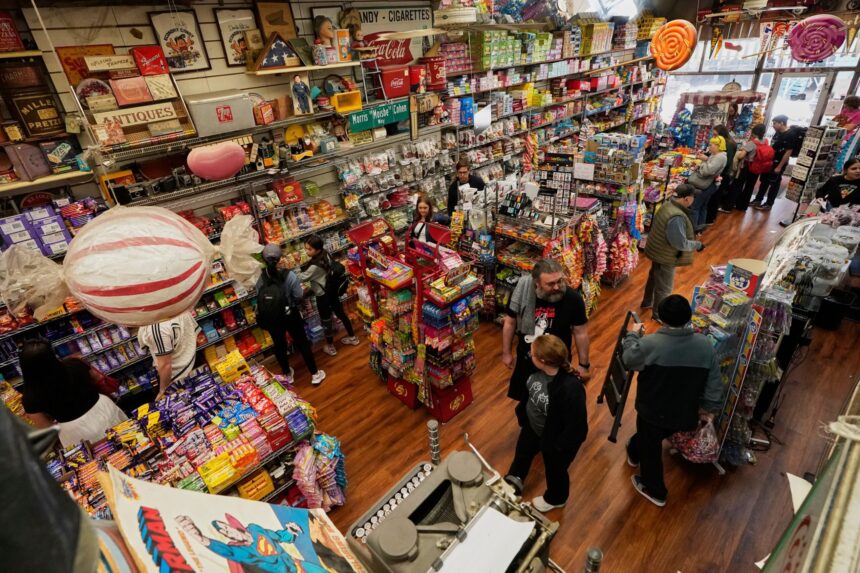Economy Candy’s shelves are filled with international confections, including German gummies, Spanish lollipops, Japanese chocolates, and a variety of candy from all around the United States. Owner Mitchell Cohen is quick to determine how many of the store’s 2,000+ items are impacted by the unprecedented round of tariffs announced by President Donald Trump, even as he stands in the middle of it all, with columns of colorful jellybeans to his left and exotic Kit Kats to his right. Cohen declares at his Lower East Side boutique in New York, “I think all of them.” Trump’s broad tariffs are affecting almost every aspect of the American economy, either directly or indirectly, including a small shop like Economy Candy.
When the tariff threats came, Cohen had just started feeling relief from a flurry of supplier price hikes fueled by inflation. He wants to stay affordable for a company called Economy Candy, but he is concerned about how some costs could have to increase in the upcoming months. According to Cohen, 39 “I think there will be another round of this hyperinflation on some items.” “It will increase if we impose tariffs everywhere.” Entering Economy Candy is like traveling back in time. Below its green-and-white striped awning, behind the bins of Smarties, butterscotches, and Lemonheads in the front display, is a sign with its name written in an old-fashioned, glaring red letter.
According to data from the Consumer Price Index, candy and gum costs have increased by almost 89% since 2005 and 34% just five years ago. According to the National Confectioners Association, price now influences candy purchases more than a buyer’s emotional state. Approximately one-third of Economy Candy’s inventory is imported and is crammed into tables and shelves close to the back of the store. Not all German Haribo variants are “more German than the Haribo store in Germany.
Also Read:
The UAE and the UK Strengthen their Cooperation to Stop illegal Financial Flows




